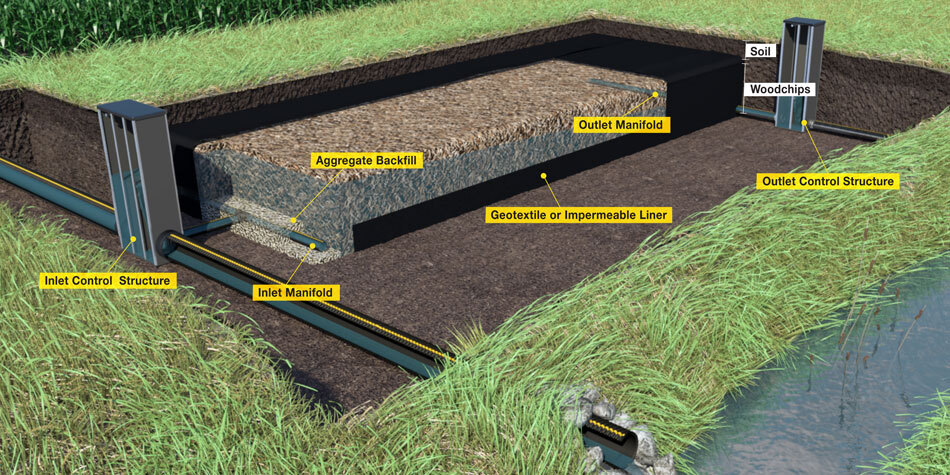Denitrifying Bioreactor
Practice Overview
Tile water is diverted through an underground bed of woodchips, allowing bacteria on the woodchips to convert nitrates in the water into safe atmospheric nitrogen gas.
Benefits
- Denitrification (35% to 50%)
- Can be retrofitted on existing systems
- Can be used in conjunction with subirrigation, controlled drainage, etc.
How It Works
When completely submerged in low-oxygen, anerobic conditions, bacteria on the woodchips will utilize the carbon from the woodchips to convert nitrates in the water into harmless nitrogen gas. The bacteria essentially “eats” carbon, and “exhales” nitrogen. Water levels can be adjusted for field operations and bioreactor effectiveness.
Installation Considerations
Before installing a denitrifying woodchip bioreactor, keep these key factors for success in mind:
- Woodchip bioreactors require a consistent flow
- Most efficient on 30- to 100-acres tile systems
- Typical footprint will measure 30’ x 100’
- Coarse, square woodchips, about ½” to 2” in size, perform best. Make sure they are free of dirt and debris
- According to the NRCS, woodchips in denitrifying bioreactors should be from wood that’s rot-resistant and has not been painted or treated
- Utilize rock around manifolds for increased infiltration and pipe support
- Avoid short-circuit flow by placing control structures on either side of the trench
Costs
- Installation: $8,000 to $12,000
- Recharge: $3,000
- Cost/Benefit: $0.95/lb of nitrogen removed from the water
